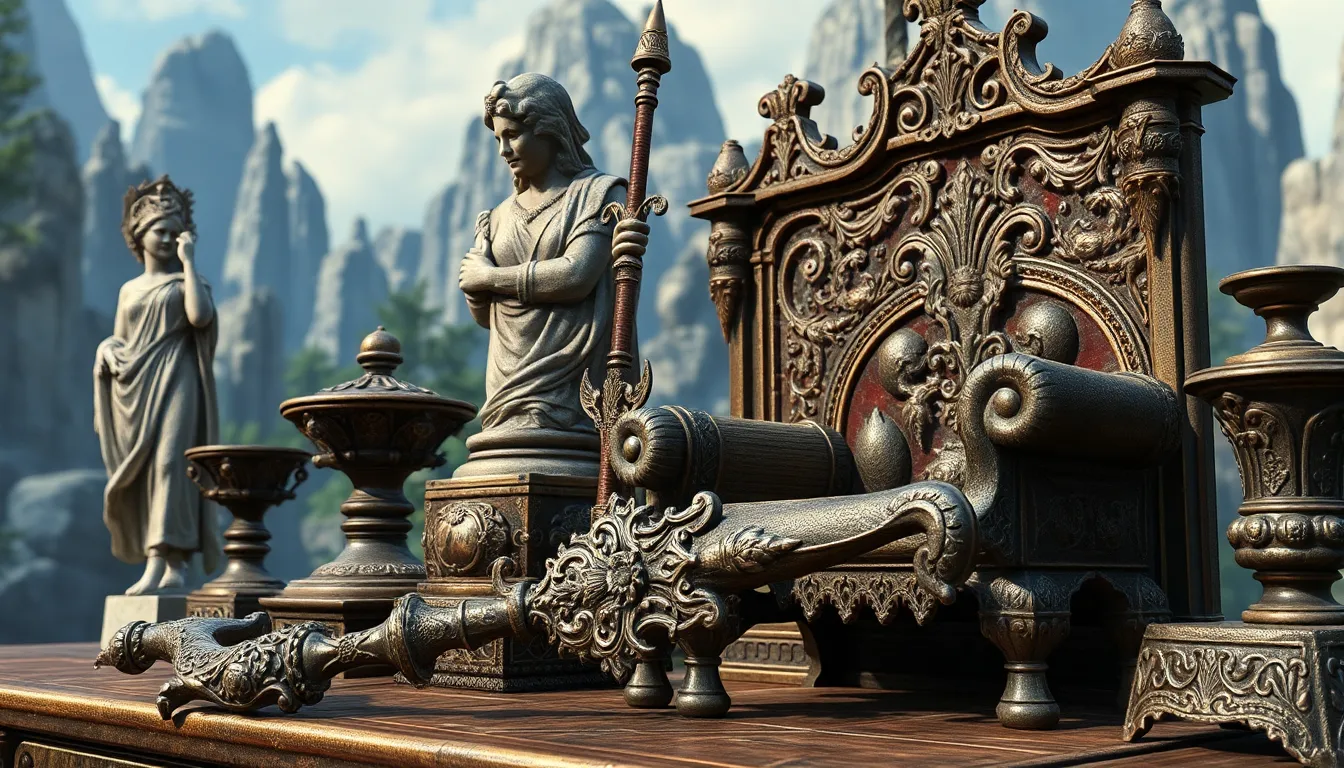In the vibrant world of RuneScape, treasures await those who dare to explore its vast landscapes. Among these treasures, antiques hold a special allure for players, offering not just aesthetic value but also a glimpse into the game’s rich history. Whether it’s a rare piece of furniture or a unique artifact, these collectibles capture the essence of RuneScape’s ever-evolving narrative.
As players delve into quests and uncover hidden secrets, they’ll discover that antiques serve more than just a decorative purpose. They provide insights into the lore and culture of the game, making them highly sought after by collectors. With the rise of interest in these unique items, understanding their origins and significance has never been more important for both new and veteran players alike.
Table of Contents
ToggleOverview of Runescape Antiques
Runescape antiques represent a unique aspect of gameplay that combines historical significance and aesthetic appeal. These items not only serve as collectibles but also provide players with insight into the game’s extensive lore.
Key Features of Runescape Antiques
- Collectibility: Antiques often attract both new and veteran players, enhancing their gaming experience through the thrill of collecting.
- Lore Connection: Many antiques contain stories or background information that enrich players’ understanding of Runescape’s universe, linking them to events and characters.
- Aesthetic Value: The design and visual appeal of antiques contribute to the overall enjoyment of the game, allowing players to showcase their unique collections.
Types of Antiques
Runescape contains various categories of antiques, including:
- Statues: Decorative items that reflect the artistry of the game’s developers.
- Weapons: Historical arms that signify battles and key moments in Runescape’s history.
- Furniture: Unique pieces that allow players to customize their in-game spaces, providing a personal touch.
Acquisition Methods
Antiques can be acquired through several means, such as:
- Quests: Completing specific missions often rewards players with antique items.
- Treasure Trails: These clue-driven challenges may yield rare antiques as rewards.
- Marketplace: Players can trade or purchase antiques from other players or in-game shops.
Understanding Runescape antiques enhances gameplay by providing context and depth, encouraging exploration and interaction within the game’s immersive world.
Types of Runescape Antiques

RuneScape antiques come in diverse forms, each embodying unique characteristics and contributing to the game’s expansive lore. The two primary categories include unique items and collectible sets.
Unique Items
Unique items in RuneScape serve as one-of-a-kind artifacts, often tied to specific quests or events. Examples include:
- Statues: Decorative pieces that enhance gameplay aesthetics and often celebrate significant game milestones or figures.
- Artifacts: Rare items with rich histories, frequently linked to pivotal narratives within the game, providing players with insights into RuneScape’s lore.
- Historical Weapons: Items like ancient swords and shields, each with its own story and often acquired through challenging quests or boss battles.
These unique items not only beautify player inventories but also deepen the immersive experience in RuneScape by connecting players to the game’s rich narrative tapestry.
Collectible Sets
Collectible sets consist of groups of antiques designed to encourage completion and exploration. Notable sets include:
- Furniture Sets: Collections of chairs, tables, and decorations that players can assemble within their player-owned houses, enhancing the personalization of their spaces.
- Armor Sets: Full sets of historical armor pieces that provide aesthetic value and often offer bonuses or advantages within gameplay contexts.
- Decoration Items: Items like paintings and rugs that contribute to the overall ambiance of player spaces, making them more inviting and unique.
Collectible sets motivate players to seek out each piece, fostering community interaction through trading and sharing of stories related to the hunt for completing these sets.
How to Acquire Runescape Antiques
Acquiring antiques in RuneScape offers players a rewarding experience that enhances their engagement with the game’s lore and culture. Several methods exist to obtain these valuable items, each requiring a unique approach.
In-Game Events
In-game events provide opportunities for players to gain antiques tied to specific themes or celebrations. During seasonal events, such as Halloween or Christmas, players can complete limited-time quests to earn unique antiques, including festive decorations or themed weapons. Participation in these events not only enriches gameplay but also allows players to collect items unavailable at other times.
Trading with Players
Trading with other players is a common method to acquire antiques. Players can use the Grand Exchange to buy and sell antiques, facilitating access to rare items. It’s essential to monitor trends in the market, as prices fluctuate based on demand and availability. Engaging with community forums or player-run marketplaces can also reveal trade opportunities for hard-to-find antiques. Building relationships with other collectors can lead to exchanges that enhance collection diversity and value.
The Significance of Antiques in Gameplay
Antiques in RuneScape serve vital roles in gameplay. They enhance aesthetic experiences, immerse players in the game’s rich lore, and provide insights into the historical context of Gielinor’s environment. Collectors recognize them not just as items but as tangible connections to the game’s narrative.
Antiques’ collectible nature drives players to seek completion. Unique items such as artifacts and historical weapons create a sense of achievement. These artifacts, linked to specific quests or events, deepen the lore and enrich the overall narrative of the game.
Collectible sets, including various furniture and armor pieces, encourage exploration. Players engage with the community through trading, fostering collaboration and interaction. The pursuit of completing sets often leads to stories shared among players, strengthening the game’s social dynamics.
Players acquire antiques through several strategies. In-game events present opportunities to gain unique items during time-limited quests. Trading platforms, like the Grand Exchange and community forums, facilitate buying, selling, and exchanging these rare artifacts. By understanding acquisition methods, players deepen their engagement with the game, promoting exploration and community interaction.
Recognizing the significance of antiques elevates gameplay experiences, offering both enjoyment and an enriched understanding of RuneScape’s vibrant world.
RuneScape antiques are more than just items; they serve as vital links to the game’s rich lore and history. Their dual role as collectibles and storytelling devices enhances the overall experience for players. Whether through unique artifacts or collectible sets, these antiques encourage exploration and community interaction.
As players delve deeper into Gielinor, they find that these items not only beautify their collections but also enrich their understanding of the game’s narrative. By appreciating the significance and origins of these antiques, players can truly elevate their gameplay and connect with the vibrant world of RuneScape.








